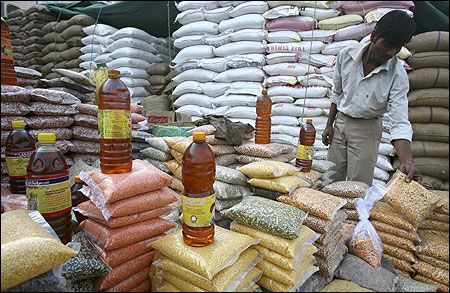
In the past few weeks, retail prices of tur dal rose beyond the Rs 200 per kg mark, provoking widespread resentment.
Food inflation, apparently moderating over the past several months, is threatening to return to centre stage.
The one significant exception to the otherwise benign response to a deficient monsoon is pulses, of which tur appears to have been the worst hit.
In the past few weeks, retail prices of tur dal rose beyond the Rs 200 per kg mark, provoking widespread resentment.
The pressure may have eased in response to several steps that the government is taking.
This is welcome, but raises questions about sustainability.
Even if prices of tur come down significantly, their persistence above the Rs 100 per kg mark for several months, which is a distinct possibility, will obviously not go down well with consumers.
More permanent solutions must be set in motion.
In this crisis, steps that can have an immediate impact, both on actual supplies and expectations of continuing price increases, could be justified.
Increasing imports, for example, make sense.
These can be reinforced by measures like increasing stock limits and so on.
However, it must be recognised that the combined contribution of all these actions will add up to some tens of thousands of tonnes in the short term.
The order of magnitude of the anticipated shortfall in the kharif harvest, which is what has essentially been driving the price increase, is much larger.
To provide a historical comparison, the last time the country experienced a similar spike in the prices of tur was during 2009 and 2010, which came after three years of production levels which were several hundreds of thousands of tonnes below their peak.
If such a pattern is repeating itself, the ability of all these measures to contain prices will depend entirely on the performance of next year's south-west monsoon.
This is undoubtedly a rather risky situation.
There is really no getting away from long-term, structural approaches to the problem of regularly recurring spikes in one of the country’s most important sources of protein.
Further, of all the pulses, tur appears to be the most desired and rising household incomes are inexorably pushing demand for this item higher.
There are four critical elements in a strategy to overcome the problem.
First, land that is ideally suited for the cultivation of pulses must be largely sown with them.
Distorted incentives that divert such land to other crops must be done away with. Second, there must be a concerted effort to increase stagnant land productivity, unchanged for two decades -- an embarrassingly weak response to a situation of rapidly increasing demand.
Third, innovative ways of preserving and storing tur must be developed, which will involve a dedicated and adequately funded research programme.
Finally, a more organised and predictable source of imports needs to be developed. Contract farming in land-abundant countries must be explored.
The image is used for representational purpose only. Photograph: Reuters










